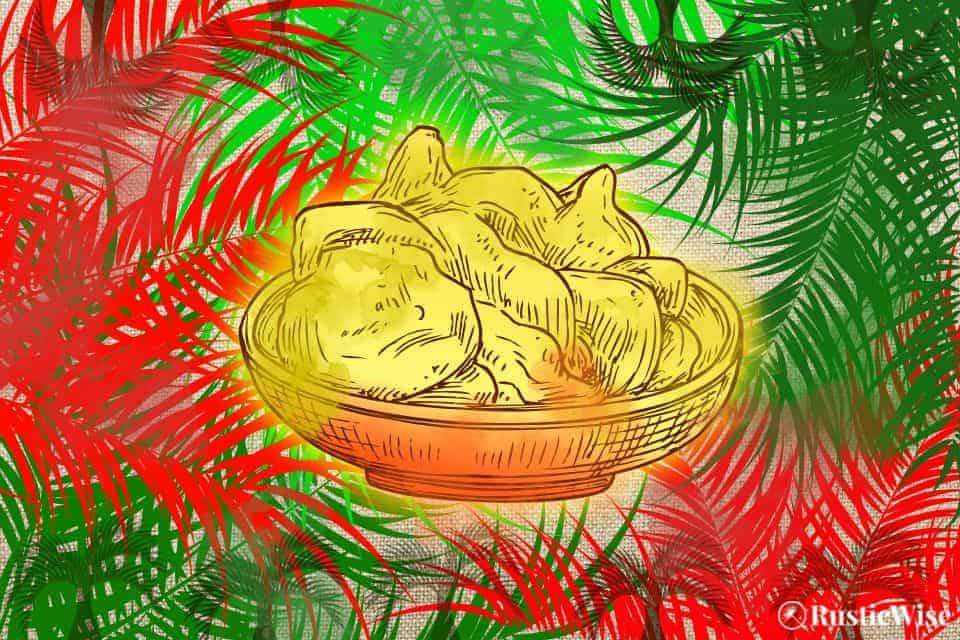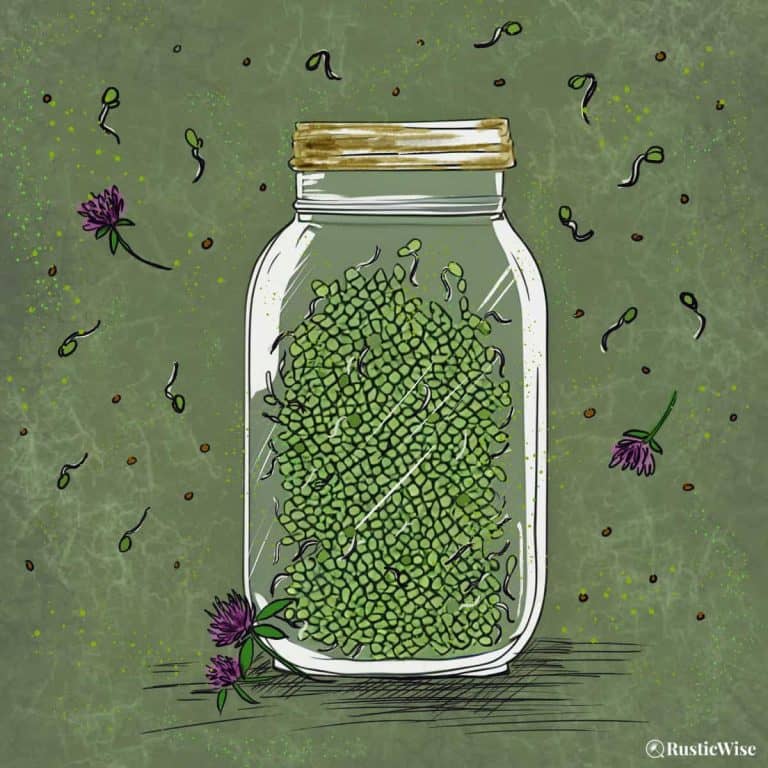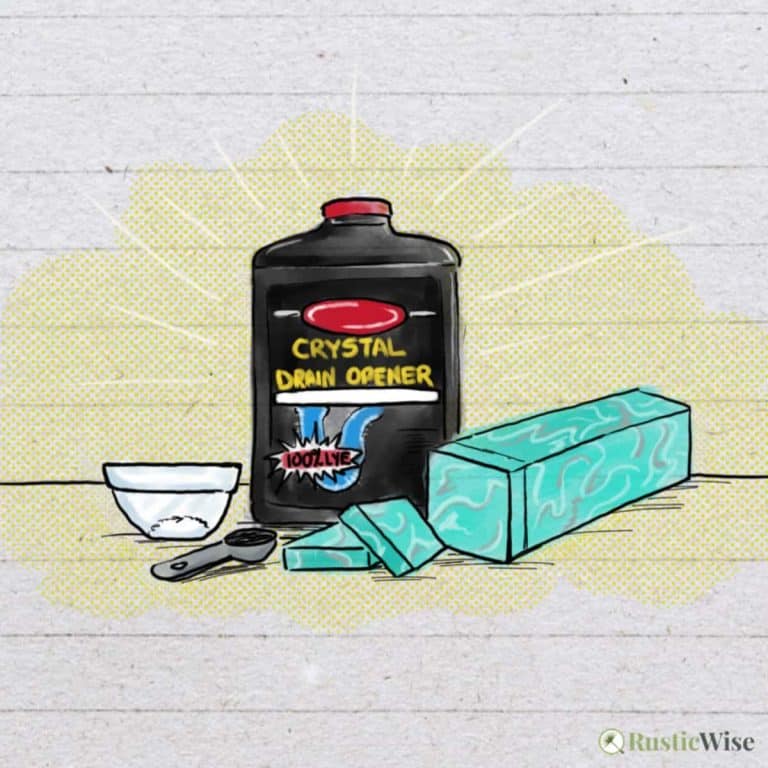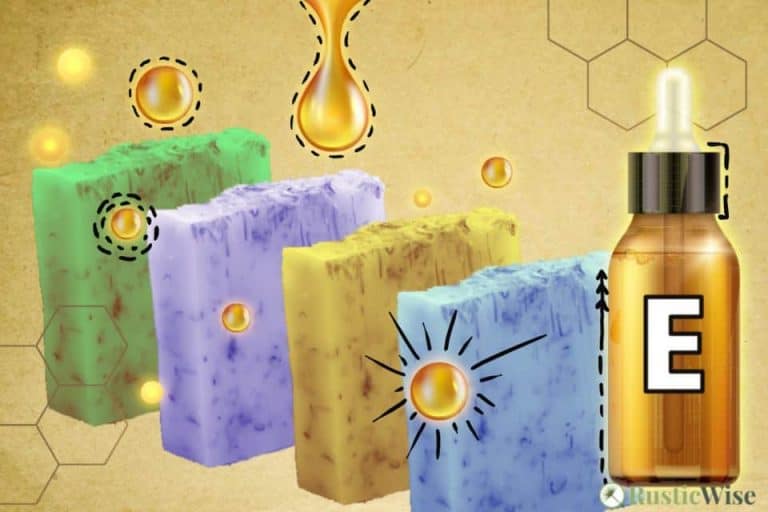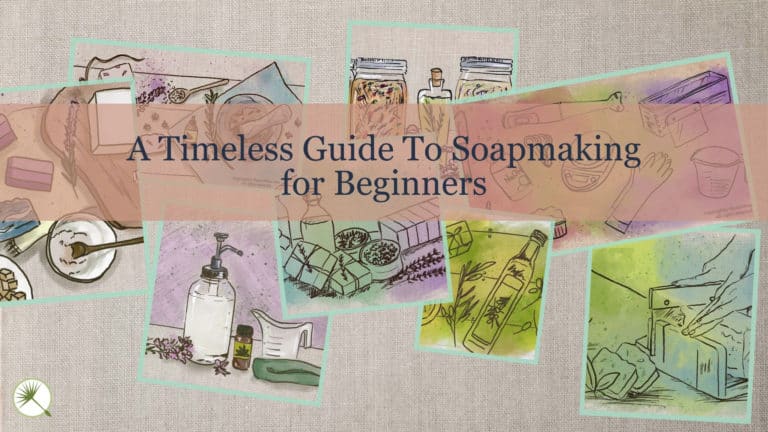6 Benefits of Palm Oil in Soap (And Why Some People Refuse To Use It)
RusticWise is supported by its readers. When you purchase through links on our site, we may earn an affiliate commission. As an Amazon Associate, we earn from qualifying purchases. Thank You!
The benefits of palm oil in soap are plenty: it adds hardness to soap bars, is fairly inexpensive, and adds a creamy, stable lather. It also contains vitamins A and E which make it skin-friendly. There are, however, downsides to using palm oil, namely its links to deforestation and loss of animal habitat.
Since the plight of palm oil and its link to environmental degradation has come to the foreground, there have been efforts to address this. In 2004, The Roundtable on Sustainable Palm Oil (RSPO) was founded, and developed a set of criteria to minimize harm to the environment and promote sustainable practices. Producers of palm that meet these are RSPO certified.¹
Still, the use of palm oil remains controversial.
We’ll look at the various benefits of palm oil in soap, what it does in soap, along with palm oil substitutes if you wish to avoid using it. We’ll also share two soap recipes: one with palm oil, and one without.
Palm oil vs. palm kernel oil (PKO)
While both palm oil and palm kernel oil (PKO) derive from the oil palm tree (Elaeis guineensis), they are fundamentally different. When used in soap making, palm oil and PKO have different fatty acid profiles, and add unique properties to the finished soap.
Palm oil contains mainly palmitic fatty acids, oleic acids, and a touch of linoleic acids.
Palm kernel oil comprises mostly lauric acid, myristic acid, oleic acid, and a touch of palmitic acid.
There’s a high demand for palm oil production, as it’s used to manufacture many household items. Plus, oil palm trees are widely available and a source of “cheap” oil. (Of course there’s a price to be paid for the over-cultivation of oil palm trees which we’ll cover below.)
Palm oil is widely used in commercially produced biofuels, candles, cosmetics, soaps, and various industrial lubricants.²
And let’s not forget that palm oil is a popular cooking oil around the world as it contains no transfats.³
PKO is used mainly in food processing. It’s a component of breads, chocolate, cookies, ice cream, and margarine. They often feed the leftover residue from PKO to cattle.²
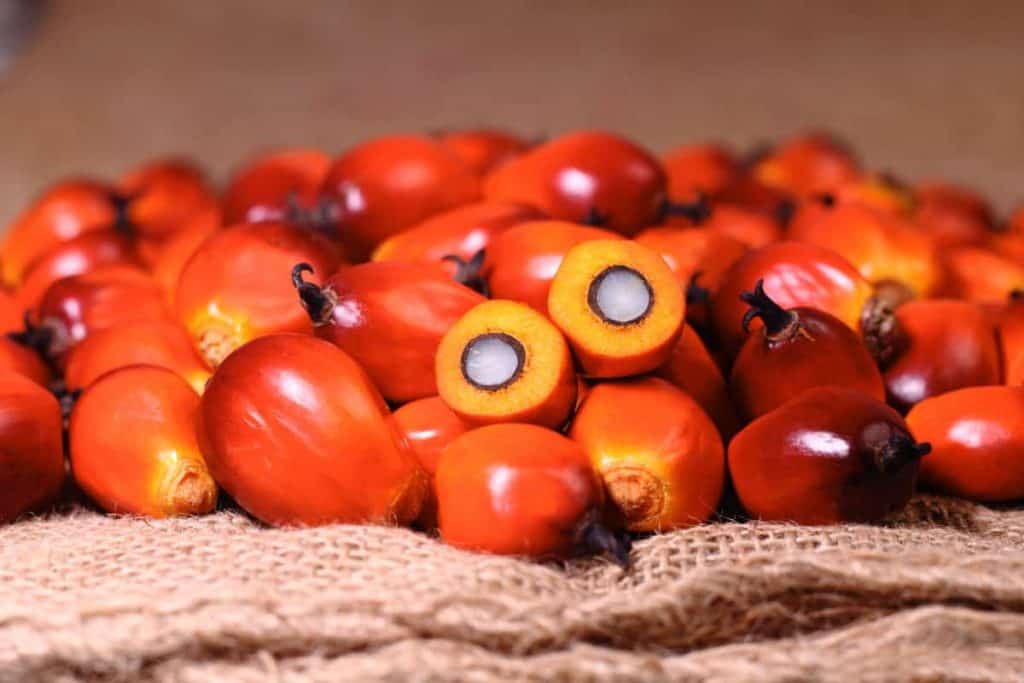
Credit: 123RF.com
Palm oil
Palm oil comes from the fleshy red palm fruit. For soap making, most people use refined varieties that are Refined, Bleached, and Deodorized (RBD). This leaves the palm oil nearly colorless and odorless, a neutral base oil.
Palm oil is sometimes used as a replacement for lard or tallow in homemade soaps.
As palm oil is a saturated fat and a hard oil, it creates a hard bar of soap with moisturizing properties and a creamy lather. Many soapers like to keep the palm oil ratio in recipes between 20 and 30 percent.⁴
Palm kernel oil (PKO)
Extracted from the kernels of the oil palm tree, we consider PKO a “brittle” oil. Brittle oils are harder than so-called hard oils, as they require a bit of elbow grease to chip out of the container.
PKO produces very hard soaps. It’s highly cleansing and when used in high quantities, may strip the skin of natural oils. It also produces fluffy, bubbly lather.
Palm kernel oil produces tons of glycerin during saponification!
Keep the amount of PKO to around 30 percent in cold process soap (or hot process).
Palm kernel flakes
PKO also comes in flake form, which makes it a lot easier to use! This is typically a blend of partly hydrogenated palm kernel oil and soy lecithin.
Keep the ratio of PKO flakes to 15 percent or less to prevent soap bars from becoming too hard.
What’s red palm oil?
Red palm oil (RPO), sometimes called red palm butter, or virgin palm oil, is a type of unrefined oil derived from the oil palm. It’s aptly named for its reddish-orange color, which lends a golden color to finished soaps.
Unrefined red palm oil is especially high in antioxidants such as carotenoids, a pre-cursor to vitamin A.⁵
Unlike refined palm and PKO typically used in making soap, RPO has a strong smell (which may fade over time) and taste (which won’t matter if you’re making soap with it!).
You might like
Palm Oil – RSPO Certified – Sustainable – Food Grade – Kosher – Not Hydrogenated
- 8 pounds in a 1 gallon pail: HDPE microwavable container with resealable lid and removable handle.
- RSPO CERTIFIED – Sustainable – Food Grade – not hydrogenated – no stir.
- EXTRACTION METHOD: Physically Milled, Fractionated, Solvent Extracted, Refined, Bleached, Deodorized, Votated – COUNTRY OF ORIGIN: Malaysia and/or Indonesia.
Found on Amazon
Check Current Price
Those in Canada and the UK should be taken to the product listing in your region.
6 palm oil soap benefits
In the world of handmade soap making, we often use palm oil as a complementary oil to accompany other soft, skin-friendly oils.
Here are a few benefits of palm oil in soap.
1. A rich source of vitamin E and minerals
Palm oil offers plenty of vitamin E—it’s the largest natural source of tocotrienol.³
Tocotrienols are a form of vitamin E that’s a more powerful antioxidant than tocopherols (another vitamin E isomer).⁵
For skincare, vitamin E provides:
- UV protection: Vitamin E increases photoprotection from light when applied topically. It also helps to minimize any damage to skin after UV exposure.⁶
- Anti-inflammatory properties: Vitamin E protects skin after UV exposure by reducing signs of skin inflammation, including swelling, thickness, edema, and erythema.⁶
- Protection from free radicals: Vitamin E is a powerful antioxidant which helps to protect the skin from damaging free radicals.⁶
Palm oil also contains high amounts of vitamin K and magnesium.³
2. Red palm is high in vitamin A (carotenoids)
Crude palm oil (aka red palm oil) contains 15 times more carotenoids than carrots.³
The body processes carotenoids as vitamin A. When applied topically, vitamin A may help smooth wrinkles, improve skin tone (by reducing dry patches and splotchiness), and possibly treat acne.⁷
And just like vitamin E, vitamin A is also a potent antioxidant which helps to ward off free radicals.
Note: While palm oil and PKO may contain some carotenoids, the refining process may remove the bulk of it. If you’re looking to add vitamin A to your soap bar to nourish dry skin, choose red palm butter.
3. Adds cleansing properties and bubbly lather
PKO is a highly effective cleansing agent which also produces large, fluffy bubbles. In this way, palm kernel oil acts much the same as coconut oil.
4. Adds hardness to soap bars
All types of palm oils including PKO and RPO add great hardening properties to your batch of soap. If you’re tired of bars of soap that melt away, or are just too soft, add a bit of palm!
5. Economical and readily available
Both palm and PKO are budget-friendly base oils and are easy to find at most soap suppliers, or on Amazon.
You may have a harder time finding red palm butter, as it’s not as widely used and more expensive. Try looking at specialty grocery stores.
6. Long shelf life
Not prone to oxidation like other oils that are higher in linoleic fatty acids, soaps made of palm and PKO enjoy a long and stable shelf life.
Table: Comparison of Palm Oil, PKO, Palm Kernel Flakes, and Red Palm Butter
Here’s a quick look at palm oil soap properties.
| Palm Oil | Palm Kernel Oil (PKO) | Palm Kernel Flakes | Red Palm Butter | |
|---|---|---|---|---|
| Hardness | 50 | 75 | 90 | 50 |
| Cleansing | 1 | 65 | 66 | 1 |
| Conditioning | 49 | 18 | 4 | 49 |
| Bubbly lather | 1 | 65 | 66 | 1 |
| Creamy lather | 49 | 10 | 24 | 49 |
| Lauric acid | 0 | 49 | 49 | 0 |
| Myristic acid | 1 | 16 | 17 | 1 |
| Palmitic acid | 44 | 8 | 8 | 44 |
| Stearic acid | 5 | 2 | 16 | 5 |
| Ricinoleic acid | 0 | 0 | 0 | 0 |
| Oleic acid | 39 | 15 | 4 | 39 |
| Linoleic acid | 10 | 3 | 0 | 10 |
| Linolenic acid | 0 | 0 | 0 | 0 |
| NaOH SAP Value | 0.142 | 0.176 | 0.176 | 0.142 |
| KOH SAP Value | 0.199 | 0.247 | 0.247 | 0.199 |
The ugly side of the palm oil industry
With high palm oil consumption, the demand for all types of oil derived from the oil palm has devastated local ecosystems. Extensive regions of Indonesia, Malaysia, and Africa acutely felt the effects of palm oil production.²
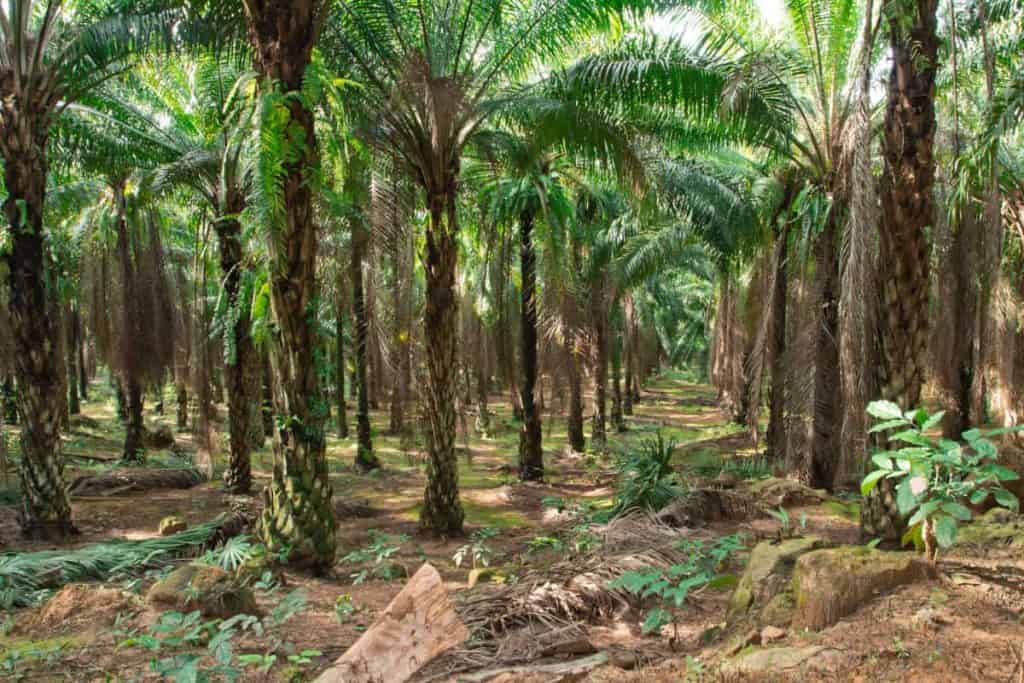
Credit: Yay Images
To churn out large amounts of palm oil in a short period, many palm oil growers use slash-and-burn methods. The results of this method of cultivation have led to widespread deforestation, which harms local animal and plant life. In Indonesia, Bornean and Sumatran orangutans have suffered from severe habitat loss.²
Losing local ecosystems has also contributed to poor air quality in many parts of Southeast Asia.²
The Roundtable on Sustainable Palm Oil (RSPO) works to foster sustainable practices which minimize harm to the environment. A producer of palm oil which has met RSPO’s stringent guidelines earns the badge of RSPO certification. ¹
Despite this, many environmentalists still discourage the use of oil palm products altogether.
Why not forgo palm oil altogether?
If the effects of palm production are so harmful, why not stop producing it altogether?
Unfortunately, the solution to this problem is complicated. Simply stopping palm oil production would harm the livelihoods of many vulnerable workers in countries where they have few prospects of earning a living.
Using palm oil in commercially produced goods is so prevalent that it would be difficult to replace it. Other vegetable oil replacements also come with their own demands on the environment and production constraints.
Refusing to make or use products containing palm derivatives is a personal choice. At the very least, make sure you buy palm from RSPO certified producers.
Palm oil soap substitutes
As a soap maker, if you wish to skip palm oil altogether in your soap recipe, no problem. There are plenty of palm oil alternatives to choose from.
Whenever you substitute one oil for another in a recipe, ensure you run your numbers through a lye calculator first!
Here are a few oils that share a similar fatty acid profile to palm:
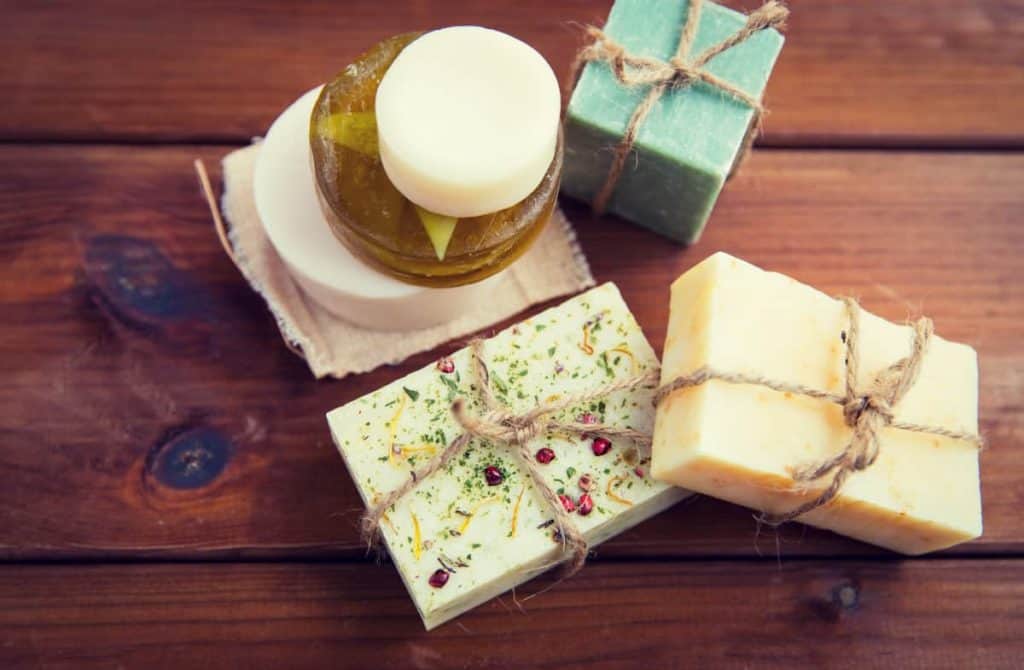
Palm oil soap recipe
The following two recipes (palm and palm free) are from Alicia Grosso’s book, The Everything Soapmaking Book.⁹
Here’s a simple cold process recipe featuring the nourishing qualities of olive oil, the bubbly lather and cleansing properties of of coconut oil, plus the hardness and creamy lather of palm oil.
If you’re new to soap making, please read up on lye safety first. For more in-depth instructions on basic cold process soap making, check out our article on a basic cold process soap recipe with just two oils.
Gather up your soap making supplies, and let’s get started!
Yield: 2-pound batch (or roughly 7 to 8 bars of soap)
Ingredients
Lye solution:
- 4.8 ounces sodium hydroxide lye
- 10 ounces distilled water
Hard oils:
- 8 ounces coconut oil
- 6 ounces palm oil
Liquid oils:
- 1 pound 2 ounces olive oil
- 1 ounce castor oil
No palm oil soap recipe
Can you make natural soap without palm oil? Yes, absolutely! While palm oil is a popular soap base, you can definitely make great bars of soap without it.
Lard is a common substitute for palm oil (and vice versa). Like palm, lard boasts creamy lather and moisturizing properties. Here’s an easy cold process recipe for making your own palm oil free soap bars.
Yield: 2-pound batch (or roughly 7 to 8 bars of soap)
Ingredients
Lye solution:
- 4.6 ounces sodium hydroxide lye
- 10 ounces distilled water
Hard oils:
- 10 ounces coconut oil
- 10 ounces lard
Liquid oils:
- 12 ounces olive oil
- 1 ounce castor oil
The takeaway: are the benefits of palm oil in soap worth it?
While there are plenty of benefits of using palm oil from adding hardness and moisturizing properties to more practical benefits such as being budget-friendly and widely available, some people will choose to skip palm altogether.
If you’re making soap to sell, keep in mind that not every customer will want products made with palm oil.
Whether you choose to use palm oil is a personal decision. If you plan on using it, do your research and support RSPO certified palm producers.
New to making soap? 🧼❓
👉We have a fantastic overview on the whole soapmaking process here: read our Timeless Guide To Soapmaking.
If you would like to see our soapmaking posts organized by topic type, see our Soapmaking Collection.

References
- The Roundtable on Sustainable Palm Oil, About, https://rspo.org/about. Accessed December 2021.
- Britannica, Oil palm, https://www.britannica.com/plant/oil-palm. Accessed December 2021.
- Mukherjee, S., & Mitra, A. (2009). Health Effects of Palm Oil. West Bengal; School of Medical Science and Technology, Indian Institute of Technology. https://citeseerx.ist.psu.edu/viewdoc/download?doi=10.1.1.572.6122&rep=rep1&type=pdf
- Grosso, Alicia (2016). DIY Artisanal Soaps: Make Your Own Custom Handcrafted Soaps! Adams Media. ISBN 978-1-4405-9408-3.
- Cassiday, Laura (2017). “Red palm oil,” The American Oil Chemists’ Society, https://www.aocs.org/stay-informed/inform-magazine/featured-articles/red-palm-oil-february-2017?SSO=True. Accessed December 2021.
- Oregon State University, Vitamin E and Skin Health, https://lpi.oregonstate.edu/mic/health-disease/skin-health/vitamin-E. Accessed December 2021.
- Mayo Clinic, Vitamin A, https://www.mayoclinic.org/drugs-supplements-vitamin-a/art-20365945. Accessed December 2021.
- Soap Calc, Recipe Calculator, http://www.soapcalc.net/calc/soapcalcwp.asp. Accessed December 2021.
- Grosso, Alicia (2013). The Everything Soapmaking Book, 3rd Edition. Adams Media. pp. 90. ISBN 13: 978-1-4405-5013-3.

Author: Theresa Tesolin
Theresa is co-founder of RusticWise. She helps people unleash their inner DIY spirit by encouraging them to get dirty and make or grow something from scratch.

